Contenu
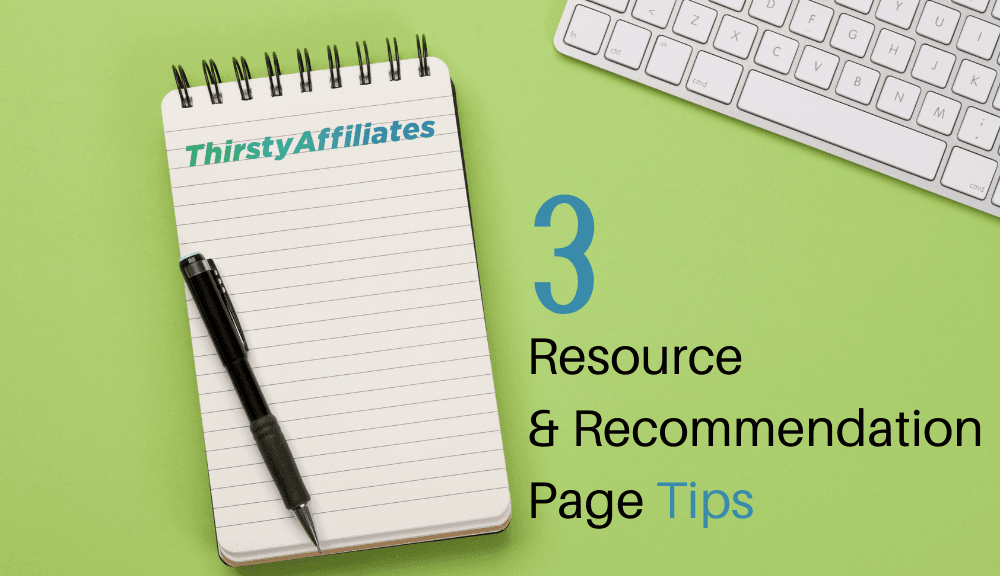
La course à pied un site web affilié n'est pas toujours facile. Si vous faites la promotion de plus d'un produit, cela peut être encore plus difficile. Une page de ressources peut être un moyen pratique d'afficher tous les éléments suivants vos produits partenairesmais vous ne savez peut-être pas comment vous y prendre.
Heureusement, le processus ne doit pas être difficile. En suivant quelques conseils, vous pouvez créer une ressource puissante sur votre site et commencer à augmenter le nombre de conversions.
Dans cet article, nous allons passer en revue quelques raisons pour lesquelles vous pourriez vouloir créer une page de ressources pour votre site web d'affiliation. Nous vous donnerons ensuite quelques conseils pour vous aider à démarrer. C'est parti !
Pourquoi créer une page de ressources ?
Une page de ressources est une partie de votre site où vous pouvez présenter les outils que vous utilisez pour gérer votre site web. Cette page constitue généralement une liste de recommandations pertinentes et personnalisées à l'intention de votre public. En tant que telle, elle peut constituer une excellente occasion de promouvoir vos liens d'affiliation.
Cette ressource présente plusieurs avantages. Tout d'abord, c'est un moyen simple de centraliser de nombreux partenariats différents pour vos utilisateurs. Elle permet également d'apporter une touche personnelle à ce que vous vendez.
Néanmoins, ces ressources ne doivent pas nécessairement être associées à un lien d'affiliation. Vous pouvez également choisir de promouvoir des produits non affiliés. Cela peut équilibrer la page et vous aider à vous assurer que vous fournissez autant de recommandations utiles que possible.
Comment créer une page de ressources pour votre site d'affiliation (3 conseils)
Êtes-vous prêt à créer votre page de ressources ? Voici trois points importants à garder à l'esprit.
1. Entrer dans les détails
Si vous vous contentez d'afficher vos liens d'affiliation sans contexte, il y a de fortes chances que vous ne voyiez pas vos ventes s'envoler. C'est pourquoi nous vous recommandons de détailler la liste de vos produits. Vous montrez ainsi que vous comprenez le produit tout en fournissant les informations nécessaires à vos utilisateurs.
Nous vous recommandons d'essayer de répondre à trois questions clés :
- Quel est le produit ?
- Comment l'utilisez-vous pour vos propres besoins ?
- Pourquoi vos utilisateurs devraient-ils l'envisager ?
Vous pouvez également inclure des exemples pertinents. Cela peut rendre votre recommandation plus convaincante.
Par exemple, disons que vous utilisez Formes Formidables pour créer des formulaires sur votre site affilié. Si vous souhaitez également promouvoir le lien de l'entreprise, vous pouvez choisir de présenter les coulisses du rôle qu'il joue sur votre site web :
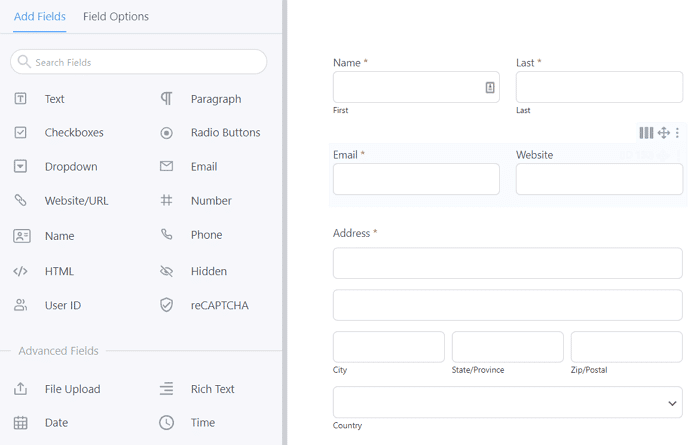
Cela permet de mettre en évidence les avantages pratiques de l'outil tout en donnant un aperçu de ce que les utilisateurs peuvent en attendre. Pour un impact maximal, pensez à associer ces images à celles du produit final afin que votre public puisse en voir toutes les capacités.
Toutefois, nous vous conseillons vivement de faire en sorte que vos recommandations soient aussi concises que possible. Vous ne voudriez pas submerger vos utilisateurs avec trop d'informations.
2. Choisissez soigneusement votre format
Les visiteurs ont tendance à être intimidés par d'énormes murs de texte, ce qui signifie qu'ils ne liront probablement pas ce que vous avez à dire. Il est donc important de formater votre page de ressources avec soin.
Si vous n'avez que quelques liens, le problème n'est pas aussi important. Vous devez surtout vous préoccuper de la régularité de l'espacement. Par exemple, les Maison de la bénédiction Le blog opte pour une liste simple mais efficace :
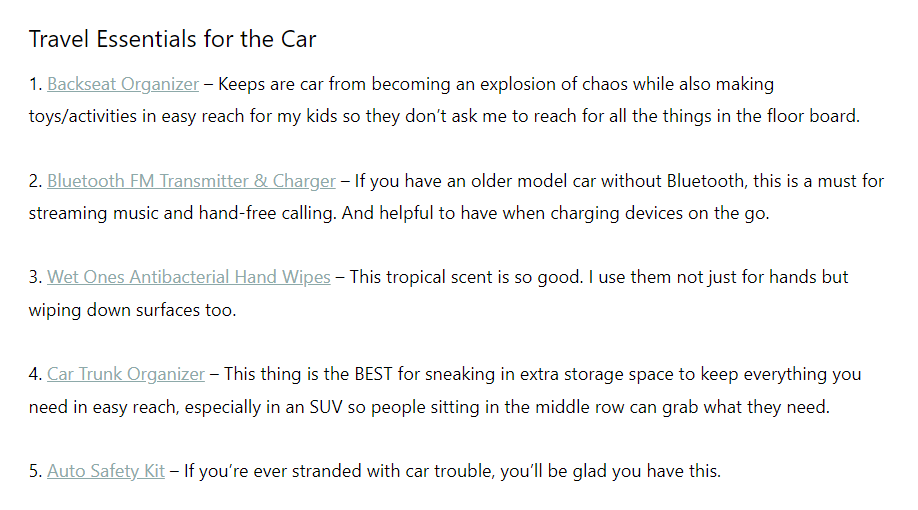
Cependant, le formatage devient plus important à mesure que le nombre de liens d'affiliation augmente - et parfois plus compliqué. Heureusement, quelques mesures simples peuvent vous aider.
Nous vous recommandons vivement d'utiliser des images. C'est un moyen facile de diviser votre contenu en parties digestes. En outre, cela permet d'obtenir un aperçu plus visuel.
Vous pouvez également envisager d'ajouter des catégories à votre page. L'un des inconvénients d'une page de ressources est qu'elle peut facilement devenir encombrée. L'application d'un système de catégories simple peut améliorer la navigation et permettre aux utilisateurs d'accéder plus rapidement aux produits les plus pertinents.
Essayez également de garder vos liens à l'esprit. Les URL aléatoires fournies par les partenaires ont tendance à être longues et confuses. Cela pourrait effrayer vos utilisateurs et leur faire croire qu'ils ne sont pas dignes de confiance. Nous vous suggérons d'utiliser une raccourcisseur de liens comme Pretty Links pour créer des URL soignées et marquées.
3. Impliquer votre public
Les pages de ressources sont généralement constituées de vos recommandations personnelles. Toutefois, cela ne signifie pas que votre voix est la seule que vous devriez mettre en avant. Vous pouvez également envisager des moyens d'impliquer votre public.
Intégrer les réflexions de vos utilisateurs est une stratégie simple mais efficace. En effet, vos visiteurs seront probablement en mesure de s'identifier aux histoires des autres utilisateurs. Cela peut également accroître le soutien perçu pour le produit dont vous faites la promotion.
Même un examen rapide peut faire des miracles. Cette forme de preuve sociale est si efficace que nous l'utilisons sur notre propre site :
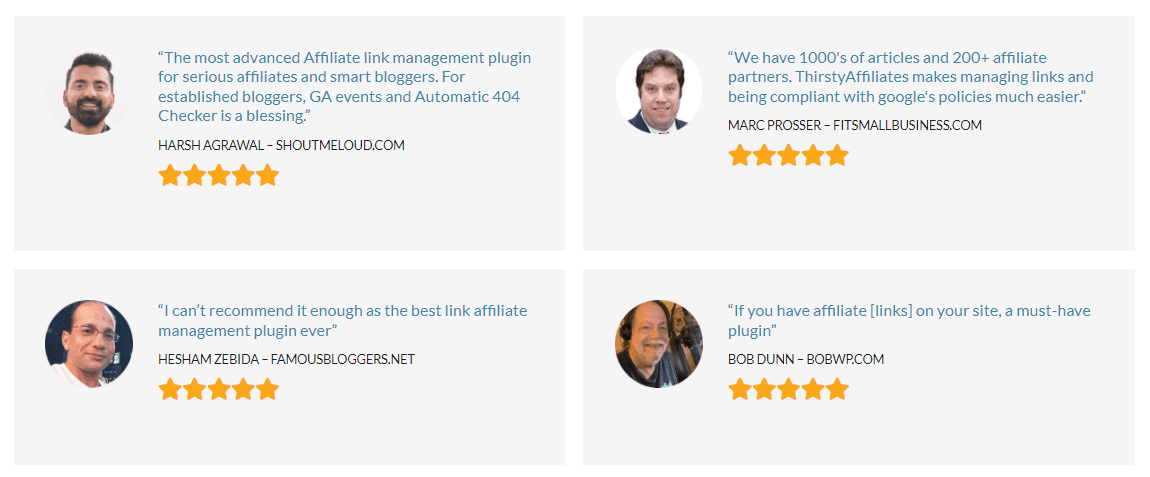
Il n'est pas nécessaire d'inclure des recommandations pour chaque produit. Nous vous suggérons d'en choisir un ou deux pour commencer. Veillez à ce qu'il s'agisse de produits ayant déjà fait l'objet d'un grand nombre d'évaluations de la part de vos utilisateurs. De cette façon, vous exploitez un niveau d'intérêt qui existe déjà.
Vous pouvez également combiner cette approche avec la stratégie des catégories mentionnée précédemment. Envisagez d'en créer une pour les produits "préférés des fans". C'est un moyen facile de mettre en avant votre communauté engagée. Elle peut également servir de point de départ pour les utilisateurs qui ne savent pas encore ce qu'ils recherchent.
Enfin, n'oubliez pas que chaque article ne doit pas nécessairement être accompagné d'un lien d'affiliation. En fait, si vous submergez vos utilisateurs avec ces URL, vous risquez d'avoir l'air arrogant. Vous pouvez donner la priorité aux produits qui répondent à leurs besoins, même si vous n'êtes pas partenaire de l'entreprise.
Conclusion
L'une des meilleures façons de promouvoir les produits d'affiliation est de montrer aux utilisateurs comment vous les utilisez. La création d'une page de ressources peut être un moyen efficace d'y parvenir, mais il n'est pas toujours facile d'y parvenir. Heureusement, quelques conseils peuvent s'avérer très utiles.
Dans cet article, nous vous avons montré trois conseils pour créer une page de ressources pour votre site d'affiliation :
- Veillez à inclure des informations détaillées sur vos outils.
- Créez une page claire et facile à lire.
- Incorporez les recommandations de votre public.
Vous avez des questions sur la création d'une page de ressources sur votre site ? Dites-nous ce que vous en pensez dans la section des commentaires !
Si vous avez aimé cet article, n'oubliez pas de nous suivre sur Twitter, Instagram, Facebook, Pinterestet LinkedIn! Et n'oubliez pas de vous inscrire dans le boîte ci-dessous.

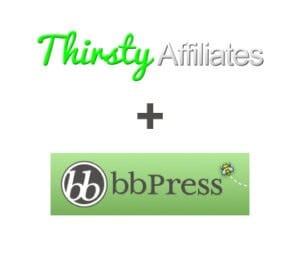

Souhaite devenir un homme d'affaires affilié
Merci pour votre aide.
Article excellent et instructif, j'en attends d'autres.
Article informatif.
Excellent article, merci beaucoup pour ce partage.
Je faisais des recherches sur la page des ressources et sur la manière d'en créer une. Ceci est très utile. Merci beaucoup.
Vous ne nous dites pas comment cette page peut être créée. Je vais l'ajouter comme une page normale dans le site web ?
Dans le monde du service clientèle sur Internet, il est important de se rappeler que votre concurrent n'est qu'à un clic de souris.
Informations bien rédigées, à recommander vivement
La création d'une page de ressources pour votre site web d'affiliation est une excellente stratégie pour apporter de la valeur à votre public, améliorer l'expérience de l'utilisateur et potentiellement augmenter les conversions des affiliés. Une page de ressources bien conçue peut servir de destination à vos visiteurs à la recherche d'informations et de recommandations précieuses. Voici un guide étape par étape sur la façon de créer une page de ressources convaincante pour votre site Web d'affiliation :
Étape 1 : Définir votre public et vos objectifs
Identifiez votre public cible :
Comprendre les intérêts, les besoins et les préférences des visiteurs de votre site web.
Définir les objectifs de la page de ressources :
Décrivez clairement les objectifs que vous souhaitez atteindre avec la page de ressources, qu'il s'agisse de fournir des informations utiles, de stimuler les ventes d'affiliés, ou les deux.
Étape 2 : Choisir un emplacement stratégique
Placement optimal :
Choisissez un emplacement bien en vue et facilement accessible pour votre page de ressources, par exemple dans le menu de navigation principal ou dans une section dédiée de votre page d'accueil.
Étape 3 : La curation de contenu
Sélectionnez les catégories pertinentes :
Organisez vos ressources en catégories en fonction des sujets ou des produits auxquels vous êtes affilié.
Réunir des ressources de haute qualité :
Incluez des liens vers des produits, des services, des outils ou des contenus réputés et de haute qualité qui correspondent à votre créneau.
Fournir des descriptions :
Rédigez des descriptions concises et informatives pour chaque ressource afin d'en expliquer la valeur et les avantages pour votre public.